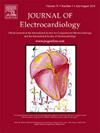Double sequential external defibrillation for refractory ventricular fibrillation: the science, the controversies and the future.
IF 1.2
4区 医学
Q3 CARDIAC & CARDIOVASCULAR SYSTEMS
引用次数: 0
Abstract
Double sequential external defibrillation (DSED), the technique of providing two rapid shocks from two defibrillators with pads placed in the anterior-lateral and anterior-posterior position has been studied in animal labs and clinical practice for over two decades. In 2022, the Double Sequential External Defibrillation for Refractory Ventricular Fibrillation (DOSE-VF, clinicaltrials.gov: NCT04080986) trial was published in the New England Journal of Medicine. This cluster randomized crossover trial involved six paramedic services in Ontario, Canada, and compared standard (anterior-lateral) defibrillation to vector change defibrillation (VC, anterior-posterior pad repositioning) or DSED for patients with ventricular fibrillation (VF) and unresponsive to three standard shocks. The trial showed superior outcomes for all primary and secondary endpoints (VF termination, return of spontaneous circulation [ROSC], survival to hospital discharge, and neurologically intact survival) with DSED versus standard defibrillation, and improved VF termination and survival to discharge, but not ROSC or neurologically intact survival, with VC versus standard defibrillation. These findings, along with the 2023 updated ILCOR guidelines endorsing DSED for refractory VF, have generated significant global interest in it's implementation. This manuscript explores the scientific rationale and underlying mechanisms of DSED, examines controversies surrounding its implementation, and outlines directions for future research.
双序次体外除颤治疗难治性室性颤动:科学、争议和未来。
双序次体外除颤(DSED)是一种由两个除颤器提供两次快速电击的技术,在动物实验室和临床实践中已经研究了20多年。2022年,《新英格兰医学杂志》(New England Journal of Medicine)发表了一项针对难治性室性颤动的双序贯体外除颤(dosl - vf, clinicaltrials.gov: NCT04080986)试验。这项随机交叉试验涉及加拿大安大略省的六家护理服务机构,并比较了对三次标准冲击无反应的心室颤动(VF)患者的标准(前侧)除颤与矢量改变除颤(VC,前后垫重新定位)或DSED。该试验显示,与标准除颤相比,DSED治疗在所有主要和次要终点(VF终止、自发循环恢复[ROSC]、存活至出院和神经系统完整生存)均优于标准除颤,并改善了VF终止和存活至出院,但与标准除颤相比,不改善ROSC或神经系统完整生存。这些发现以及2023年更新的ILCOR指南支持DSED治疗难治性VF,引起了全球对其实施的极大兴趣。本文探讨了DSED的科学原理和潜在机制,探讨了围绕其实施的争议,并概述了未来研究的方向。
本文章由计算机程序翻译,如有差异,请以英文原文为准。
求助全文
约1分钟内获得全文
求助全文
来源期刊

Journal of electrocardiology
医学-心血管系统
CiteScore
2.70
自引率
7.70%
发文量
152
审稿时长
38 days
期刊介绍:
The Journal of Electrocardiology is devoted exclusively to clinical and experimental studies of the electrical activities of the heart. It seeks to contribute significantly to the accuracy of diagnosis and prognosis and the effective treatment, prevention, or delay of heart disease. Editorial contents include electrocardiography, vectorcardiography, arrhythmias, membrane action potential, cardiac pacing, monitoring defibrillation, instrumentation, drug effects, and computer applications.
 求助内容:
求助内容: 应助结果提醒方式:
应助结果提醒方式:


